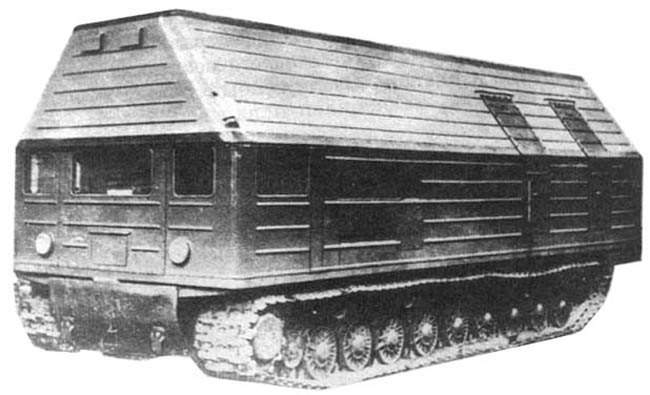
New Managing Director for Bellona Norway
The Board of the Bellona Foundation has appointed former Minister of Climate and the Environment Sveinung Rotevatn as Managing Director of Bellona No...
News

Publish date: November 5, 2015
Written by: Charles Digges
News
Russia’s Defense Ministry has announced plans to develop a line of small-scale mobile nuclear reactors that can be deployed from trucks and sleds in the country’s far north, a ministry spokesman confirmed to Bellona by telephone today.
The Ministry spokesman confirmed Wednesday Russian media reports carried by Tass and others that Defense Minister Sergei Shoigu has ordered the creation of a pilot mobile mini-reactor that would help power military operations in the harsh and remote Arctic climate.
With climate change, melting ice caps, on and off arctic oil exploration and the development of the Northern Shipping Route along its Northern coast, Russia is reestablishing many of its old bases in the Arctic – and that will need energy.
The project proposal left environmentalists and nuclear experts interviewed with a hard choice of whether to laugh or cry.
 The Novaya Zemlya archipelago is a possible deployment site for portable nuclear power plants. (Photo: Thomas Nilsen/The Independent Barents Observer)
The Novaya Zemlya archipelago is a possible deployment site for portable nuclear power plants. (Photo: Thomas Nilsen/The Independent Barents Observer)
“This is an absolutely crazy idea,” said Nils Bøhmer, Bellona’s executive director and nuclear physicist. He said “an accident with a mobile nuclear reactor in a remote area in the Arctic would have a severe environmental impact with little or no chances of cleaning up any radioactive contamination.”
The crazy idea is under development
Yury Konyushko, the managing director Innovation Projects Engineering Company (IPEC), told Tass in an interview that his company had been contracted by the military to build the pilot reactor – and many more for future deployment.
“The project has already begun and is going through a research stage now,” Konyushko told Tass, adding “There is a demand for no less than 30 such units for the extreme north and different Arctic archipelagos.”
According to Alexander Nikitin, chairman of the Environmental Rights Center (ERC) Bellona, the project envisions that reactors could be hauled around by Russia’s stout KAMAZ freight trucks, by cargo planes, by Mi-26 helicopters – and by sled-type vehicles for snowy terrain.
This last mode of transportation – which was noted in the Tass report – was characterized by Nikitin in an email interview as “novel,” and he suggested the reactors “could be towed by reindeer.”
He added that, “as far as safety is concerned, mobile nuclear power stations are vulnerable at all levels beginning with run-of-the-mill traffic accidents.”
Out with the old – in with the old
Nikitin said the portable reactor project was nothing new. The Sosny research institute in Belarus developed a few while the country was still a republic of the USSR.
One of these was a 2 Megawatt reactor built in 1961 which could could be carried around on the chassis of a tank, reported the Independent Barents Observer news portal. Another smaller reactor, called Nurka, was installed for submarine bases on the Kola Peninsula, said the portal.
 The US Army's ML 1 portable reactor, which never went beyond testing stages. (Photo: usmilitariaforum.com)
The US Army's ML 1 portable reactor, which never went beyond testing stages. (Photo: usmilitariaforum.com)
The US even got in on the game, secretly burying a small nuclear reactor at Camp Century in Greenland’s northern ice sheet, which operated between 1960 and 1966, said the Independent Barents Observer.
Because of this, Nikitin was certain the preliminary work for the old project was still lying around and sparked some interest in a Defense Ministry that’s currently replete with funding.
“I think this is a way to launder some money,” he said. “The Defense Ministry currently has a big sack of money and a lot of people are trying to dump it […] They are not creating anything new – they’ll take the old, pass it off as new and take the money.”
And money – a lot of it – is something this project will take, said Nikitin, but added: “who counts money at a time of war?”
 Glory Days: Ford's design for a nuclear powered car called the Nucleon in 1958. (Photo: Wikipedia)
Photo: Ford
Glory Days: Ford's design for a nuclear powered car called the Nucleon in 1958. (Photo: Wikipedia)
Photo: Ford
Bøhmer added that the cost of making the mobile nuclear reactors was just the beginning of the financial hemorrhage.
“Experience from the clean-up after the Soviet radioactive waste after the Cold War showed that the international community had to put tremendous effort into this clean up work,” he said.
Funding from G-8 nations guided by the European Bank of Reconstruction and Development’s Northern Dimensions Environmental Partnership alone accounted for $20 billion in nuclear remediation funding in Russia’s Northwest.
“Our fear is that in the future the international community will once again have contribute to clean up for another round of unsustainable Russian nuclear projects,” said Bøhmer.

The Board of the Bellona Foundation has appointed former Minister of Climate and the Environment Sveinung Rotevatn as Managing Director of Bellona No...

Økokrim, Norway’s authority for investigating and prosecuting economic and environmental crime, has imposed a record fine on Equinor following a comp...

Our op-ed originally appeared in The Moscow Times. For more than three decades, Russia has been burdened with the remains of the Soviet ...

The United Nation’s COP30 global climate negotiations in Belém, Brazil ended this weekend with a watered-down resolution that failed to halt deforest...